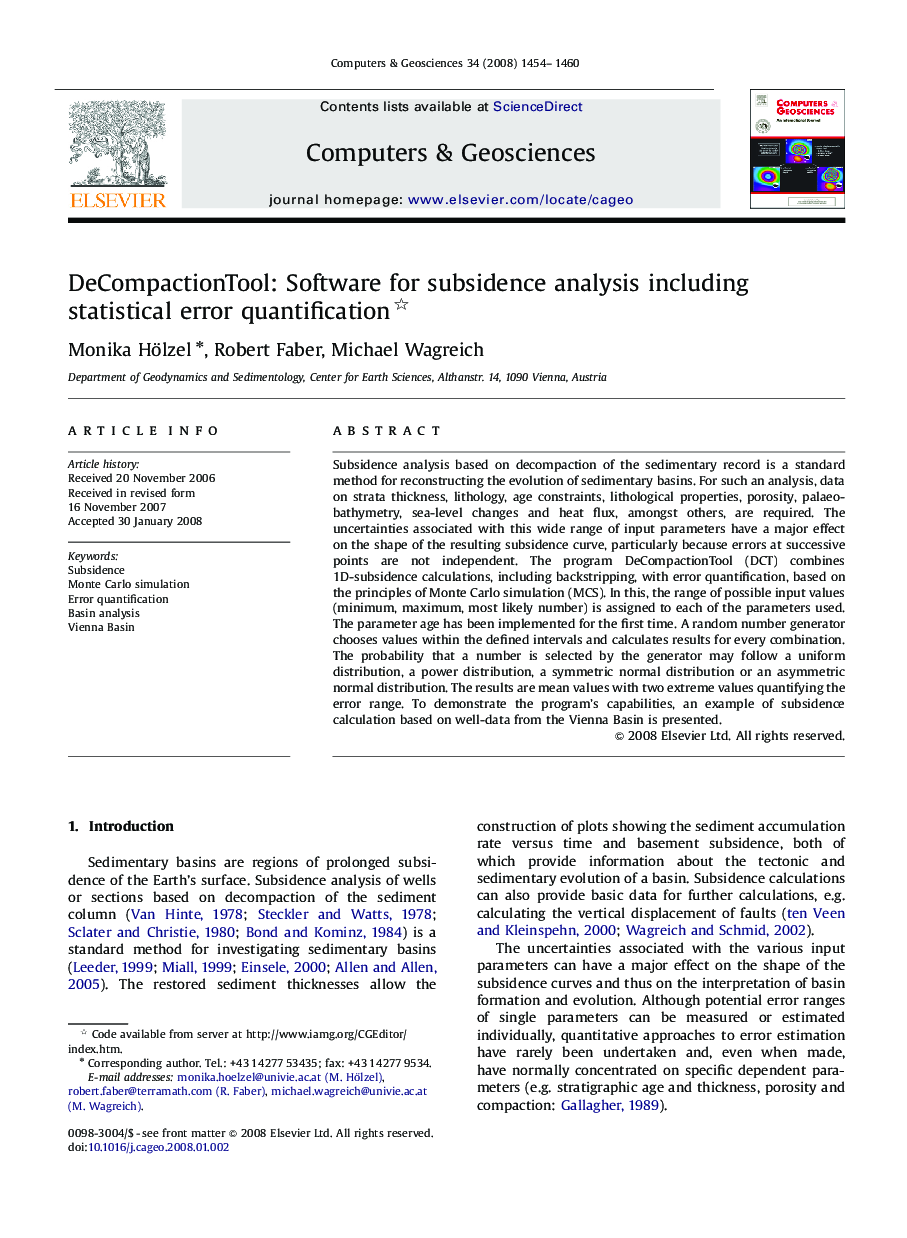| Article ID | Journal | Published Year | Pages | File Type |
|---|---|---|---|---|
| 508060 | Computers & Geosciences | 2008 | 7 Pages |
Subsidence analysis based on decompaction of the sedimentary record is a standard method for reconstructing the evolution of sedimentary basins. For such an analysis, data on strata thickness, lithology, age constraints, lithological properties, porosity, palaeobathymetry, sea-level changes and heat flux, amongst others, are required. The uncertainties associated with this wide range of input parameters have a major effect on the shape of the resulting subsidence curve, particularly because errors at successive points are not independent. The program DeCompactionTool (DCT) combines 1D-subsidence calculations, including backstripping, with error quantification, based on the principles of Monte Carlo simulation (MCS). In this, the range of possible input values (minimum, maximum, most likely number) is assigned to each of the parameters used. The parameter age has been implemented for the first time. A random number generator chooses values within the defined intervals and calculates results for every combination. The probability that a number is selected by the generator may follow a uniform distribution, a power distribution, a symmetric normal distribution or an asymmetric normal distribution. The results are mean values with two extreme values quantifying the error range. To demonstrate the program's capabilities, an example of subsidence calculation based on well-data from the Vienna Basin is presented.
